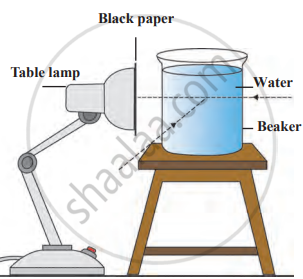1. Aim: To observe how light scatters when it passes through clear and turbid water.
2. Requirements: glass beaker, laser pointer (diode laser), water, milk or milk powder, spoon, dropper.
3. Procedure
- Fill the glass beaker with clear water.
- Shine the laser beam through the water and observe whether the beam is visible.
- Using a dropper, add a few drops of milk to the water and stir to make it slightly turbid.
- Shine the laser beam through the turbid water and observe the beam.
4. Observation and Conclusion: The laser beam is not visible in clear water. The beam becomes visible in turbid water because the light rays scatter when they hit the tiny milk particles. The scattered rays enter our eyes, making the beam visible. This experiment shows how light scatters when interacting with particles suspended in water.


